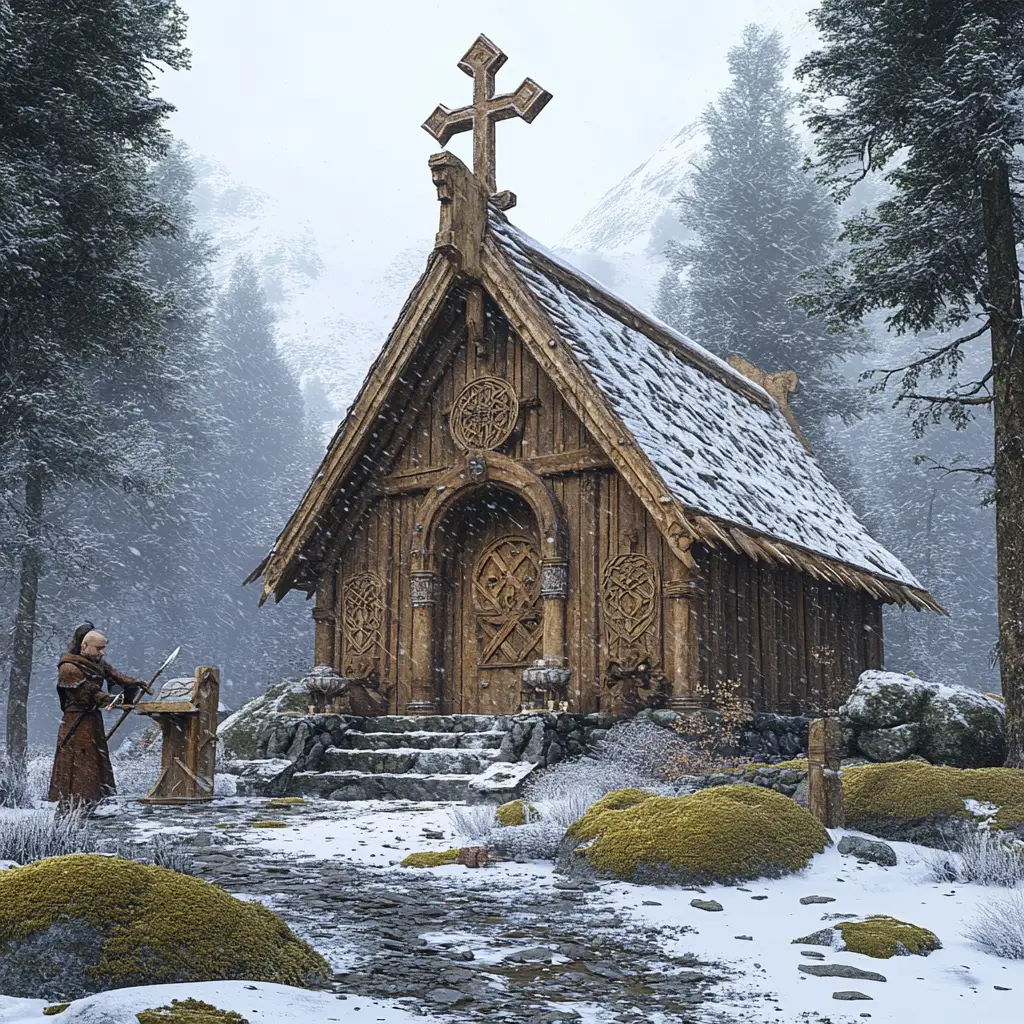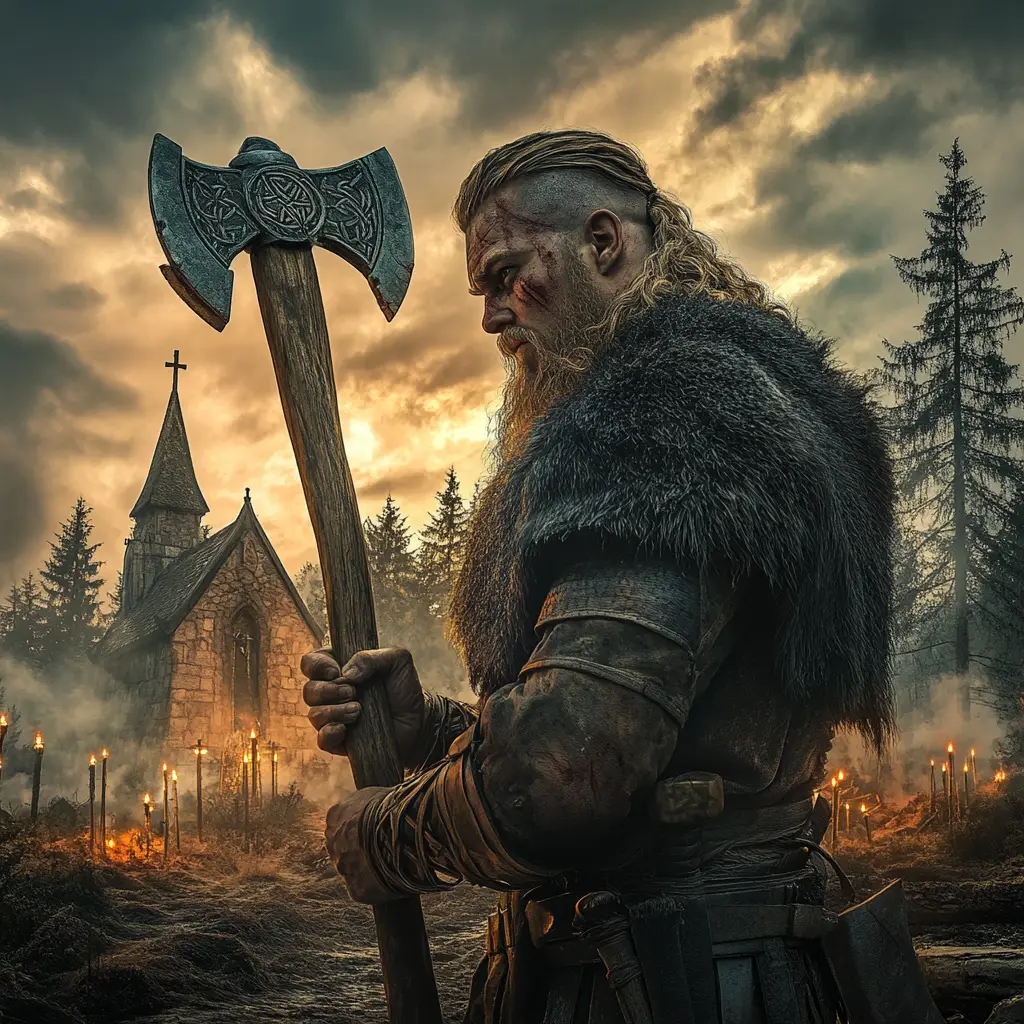Vikings and Christianity
The relationship between the Vikings and Christianity is a fascinating and complex chapter in European history. It reflects a gradual transformation from a fiercely pagan warrior culture to a society that would eventually adopt and adapt Christian beliefs and practices. This process, spanning roughly from the 8th to the 12th century, was shaped by conflict, diplomacy, trade, and cultural exchange.
Pagan Beliefs and Early Viking Society
In the early Viking Age, Norse society was deeply rooted in pagan traditions. Their religion was polytheistic, centred around gods such as Odin, Thor, Freyja, and Loki. These deities represented aspects of nature, war, fertility, and fate. The Vikings believed in a cosmology that included realms like Midgard (the world of humans), Asgard (home of the gods), and Hel (the underworld). Rites and rituals were often held at sacred groves, stone circles, or temples, and included animal sacrifices and offerings to the gods.
This belief system was closely tied to the values of Viking culture: bravery in battle, loyalty, honour, and the importance of one’s legacy. A warrior’s ideal afterlife was Valhalla, a majestic hall where the bravest would feast eternally under the rule of Odin.
Early Encounters with Christianity
The first Viking interactions with Christianity were largely hostile. From the late 8th century onwards, Viking raiders targeted monasteries and churches across the British Isles and Western Europe. These were not only centres of religious life but also wealthy and poorly defended, making them attractive targets. The infamous raid on Lindisfarne in 793 marked the beginning of what many consider the Viking Age. To Christian chroniclers, the Vikings were brutal heathens, and their attacks were seen as divine punishment.
However, not all encounters were violent. As Vikings began to settle in lands such as England, Ireland, and northern France, they came into closer contact with Christian communities. These interactions led to trade, intermarriage, and, over time, cultural assimilation.
Conversion and Integration
The conversion of the Vikings to Christianity was not swift or uniform. It varied greatly by region and was often influenced by political and economic factors. Viking rulers began to see the benefits of adopting Christianity as a means to gain legitimacy and strengthen alliances with Christian kingdoms.
In England, King Alfred the Great and other Christian rulers often demanded baptism as part of peace treaties with Viking leaders. One of the most notable examples is Guthrum, a Danish warlord who converted to Christianity after his defeat by Alfred in the 9th century.
In Normandy, the Viking leader Rollo accepted baptism when he was granted land by the King of France in 911, forming what would become the Duchy of Normandy. Similarly, in Scandinavia, kings such as Harald Bluetooth of Denmark and Olaf Tryggvason of Norway played key roles in promoting Christianity, sometimes through forceful means.
The Last Pagan Strongholds
Despite growing Christian influence, paganism persisted in many parts of Scandinavia well into the 11th century. Rural communities in Sweden and Norway, in particular, held onto their old beliefs. The process of Christianisation often involved a blending of old and new traditions, with churches built on former pagan sites and saints replacing local gods in folklore.
The final stages of Viking conversion were marked by the establishment of church structures, the building of cathedrals, and the spread of Latin literacy. By the 12th century, Christianity had become dominant across the Norse world, and the Viking Age had effectively come to an end.
Legacy
The transition from paganism to Christianity did not erase Viking identity but rather reshaped it. Norse mythology continued to influence literature, art, and cultural memory. The Christianisation of the Vikings helped lay the foundations for the medieval Scandinavian kingdoms and brought the region more fully into the cultural and political orbit of Europe.
Today, the story of the Vikings and Christianity remains a powerful example of cultural transformation, showing how belief systems evolve through contact, conflict, and change.



